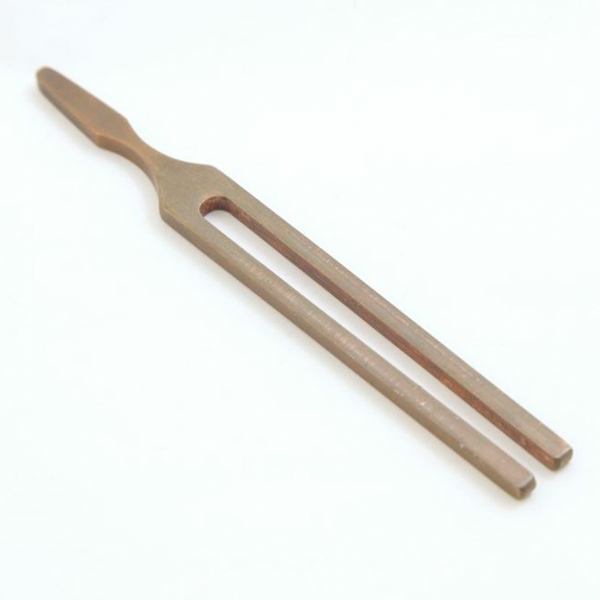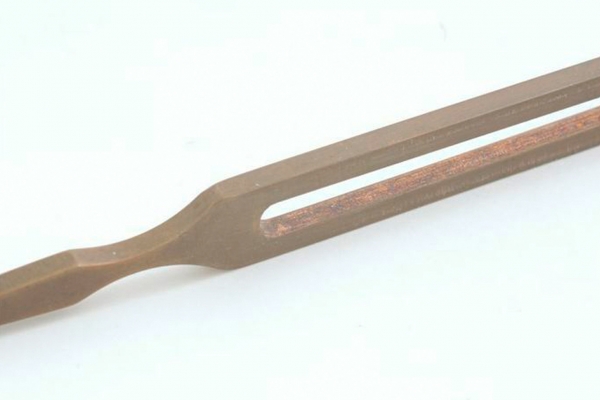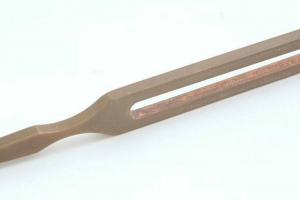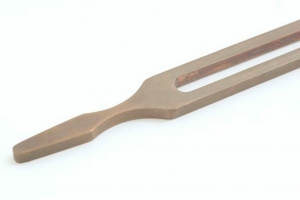
Tuning forks are so named because they are used to help tune musical instruments, but they also have a variety of other uses. They are used by audiologists to test for certain kinds of hearing loss, by the police to calibrate the radar guns used to identify speeding vehicles, and by alternative healers as an (unproven) way of improving mental clarity and physical energy. They can also apparently be used by medics to detect a bone fracture in a pinch if no x-ray is available. The applications all rely on the fact that when a tuning fork is struck, that energy is converted into vibrational energy, and its tines oscillate at a particular frequency to produce a specific pitch of note.
This copper tuning fork is one of a set of 16 made in 2009 by our Director Zoe Laughlin as part of her PhD research. Together they investigate the acoustic properties of materials and demonstrate the physics of sound and vibration. Three principle factors influence the production of sound by a tuning fork: the shape of the fork, and the density and elastic modulus (a measure of stiffness) of the material from which the fork is made. Each of the set of tuning forks is the exact same shape, but is made from a different material (an array of metals, woods, plastics and glass). Playing these tuning forks allows us to directly compare how the density and elastic modulus of each material affects the sound the fork produces.
When these tuning forks are struck, the density and elastic modulus of the material determine how much energy is absorbed and how much is converted into vibrations and audible noise. These material properties will also affect how high or low the note that is produced is (acoustic pitch) as well as how long the tuning fork rings for (acoustic brightness).
The copper tuning fork has a bright metallic orange appearance, the surface of which tarnishes and oxidises easily when handled and exposed to the air, meaning the material appears dark and dull if not cleaned. When played, this tuning fork emits a tone of a low pitch, quiet volume, and short duration. The note produced is the lowest of all the audible metals (not including the inaudible lead and zinc tuning forks) due to the fact that it has the greatest density. The vibrations produced can be felt in the hand of the player, though the intensity of the sensation is less than that produced by the steel or brass tuning forks. In order to hear the sound produced by the fork, you must hold it close to your ear and take care not to touch the prongs against any surrounding hair for this distorts and dampens the already short lived sound.
Read a research paper about these objects here.
Sample ID: 726
Particularities
- State
- Object
- Compound
- Maker
- Rex Garrod and Zoe Laughlin
- Selections
- Sound
- Categories
- Metal
- Curiosities
- Relationships
- Acoustic | Copper | Sound of Materials | Tuning Fork
Add materials you find interesting to your own selections.
Use the  button to select a material and get started.
button to select a material and get started.


